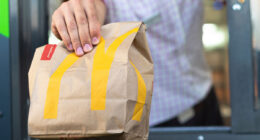It’s no secret that Walmart is a true one-stop kind of store: you walk in and are able to walk out with everything you need. The grocery section is impressive, as you can easily find, you guessed it, whatever it is you’re looking for.
And the store’s own Great Value brand features a large variety of foods—from canned vegetables, frozen breakfast options, to plenty of sweet treats, you can easily stock up your refrigerator and pantries with their items.
But, which Great Value foods just aren’t worth it? We rounded up the worst Great Value foods you just shouldn’t buy. Then, don’t miss The Worst Grocery-Store Foods for Belly Fat, Say Experts.
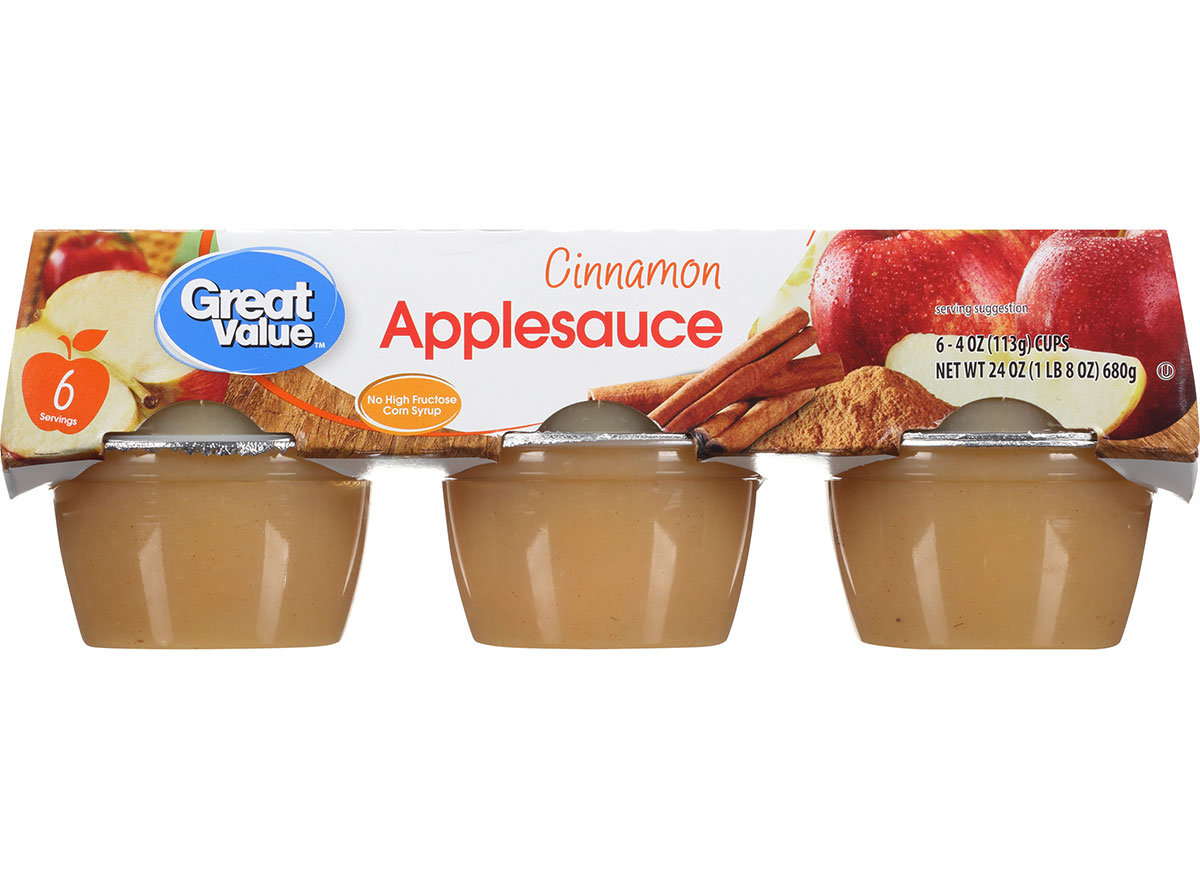

Per 1 serving; 80 calories, 0 g fat (0 g saturated fat), 0 mg sodium, 19 g carbs (1 g fiber, 15 g sugar), 0 g protein
Applesauce is an easy way to get your fruit fix, and it’s a pantry staple that will last for a while. And while there is no high fructose corn syrup here, there are still 15 grams of sugar per serving, including added sugar. Instead, go just for Great Value’s Organic Unsweetened Applesauce as it doesn’t contain any added sugar.
For more food news, sign up for our newsletter!
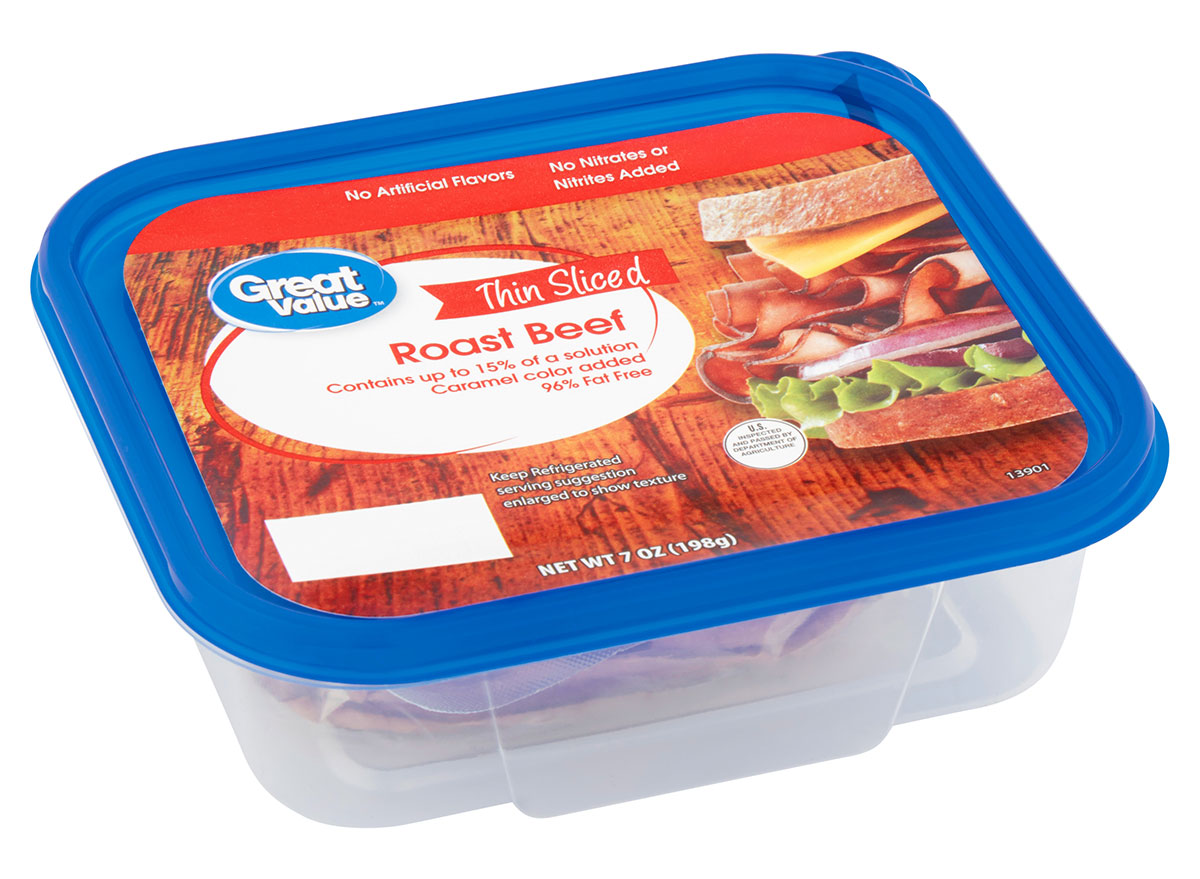

Per 2-ounce serving; 60 calories, 2 g fat (1 g saturated fat), 560 mg sodium, 0 g carbs (0 g fiber, 0 g sugar), 10 g protein
While this roast beef has no artificial flavors and no nitrates—which are good things!—what you want to be cautious of here is the sodium. One slice is already 560 milligrams and most likely if you’re making a sandwich, you’re piling on two, or three slices of the meat. Factoring in every other aspect of building a yummy sandwich, you may come close to hitting the maximum recommended 2,300 milligrams of sodium (per the most recent USDA dietary guidelines) in just one meal.
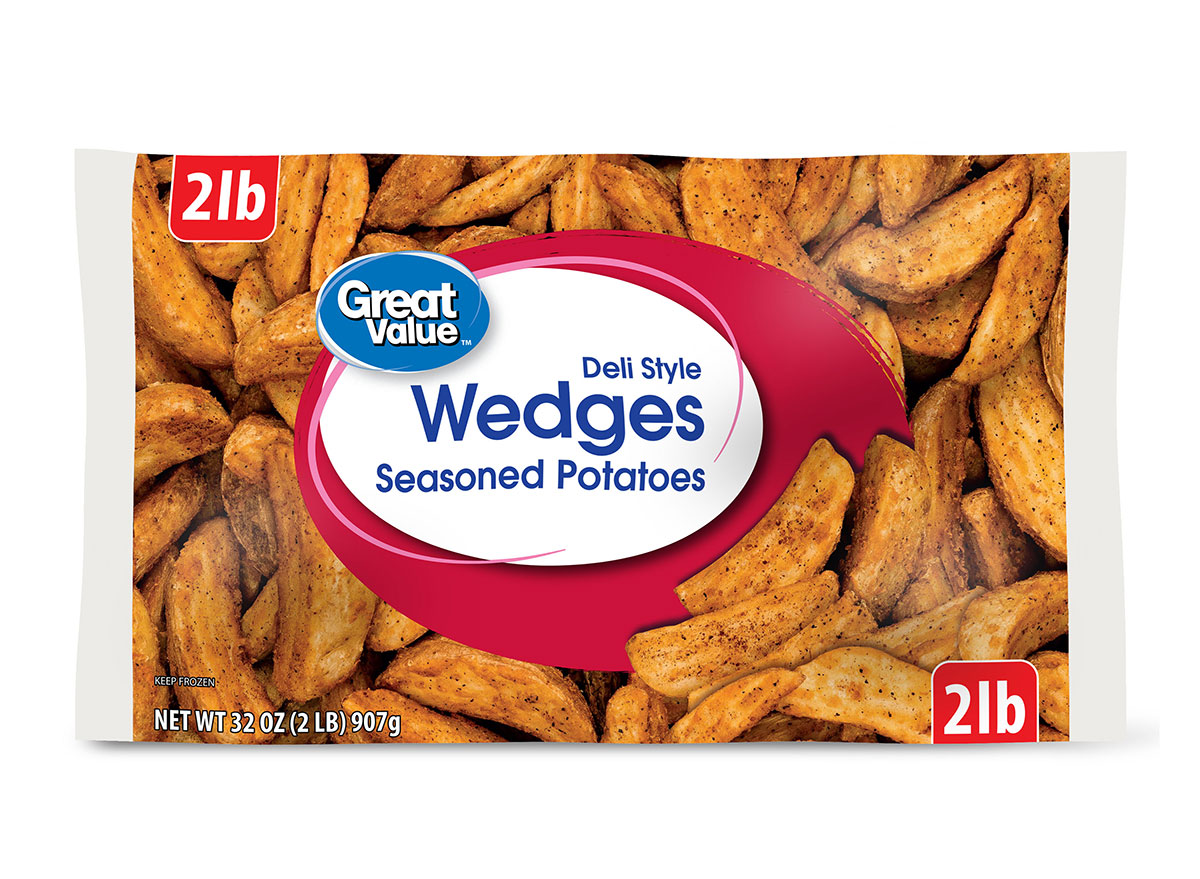

Per 3-ounce serving; 140 calories, 6 g fat (1 g saturated fat), 500 mg sodium, 18 g carbs (2 g fiber, 1 g sugar), 2 g protein
Taking a glance at this nutrition breakdown, you’re most likely thinking it’s not that bad. But keep in mind, one serving is only four pieces. That’s not very many potatoes, and each serving packs 500 milligrams of sodium so you won’t need to eat too many of these to be downing quite a bit of the salty stuff.
Don’t miss 19 Best Low-Sodium Fast Food Orders, According to Dietitians!
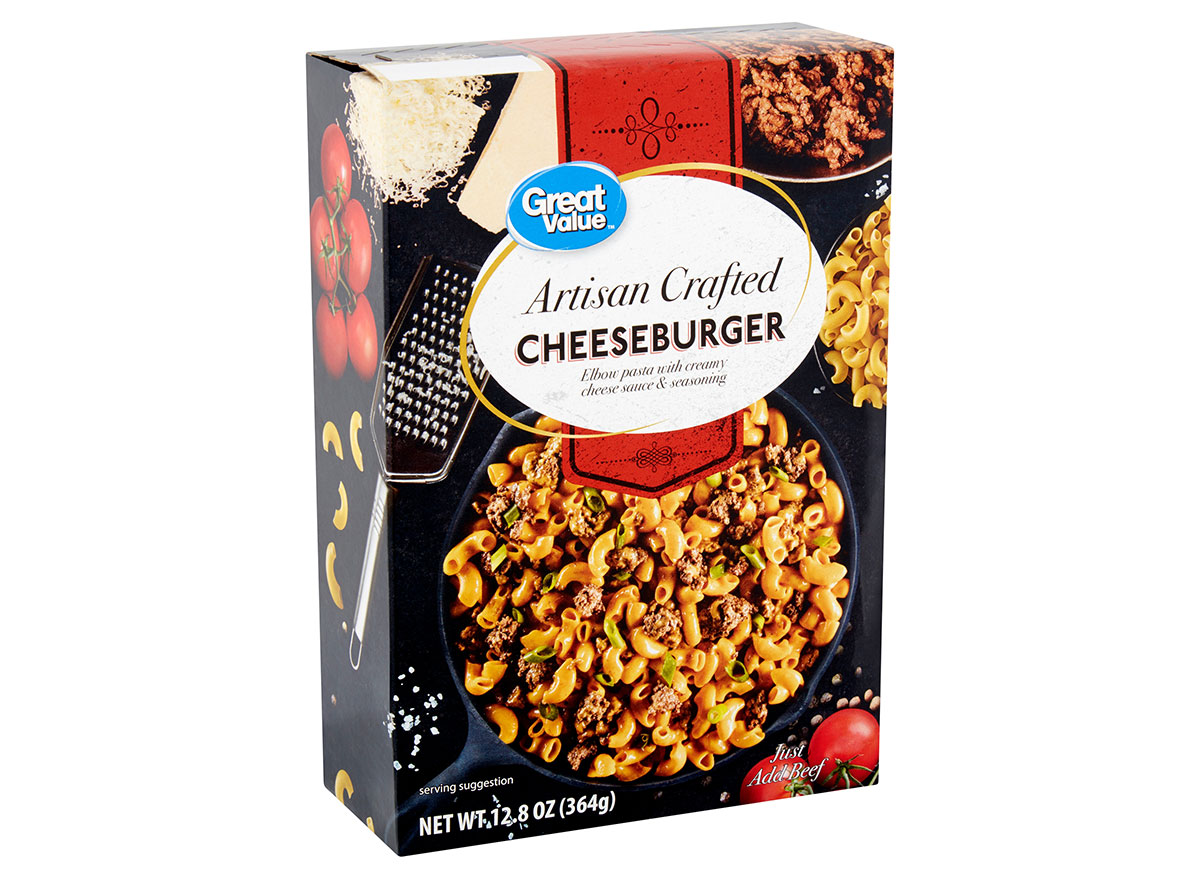

Per 2.5-ounce serving, as prepared; 380 calories, 17 g fat (6 g saturated fat), 970 mg sodium, 30 g carbs (1 g fiber, 6 g sugar), 24 g protein
A cheeseburger-inspired pasta dish sounds, well, delicious. But again, the sodium you’re going to consume from this product is just too high. You’re much better off whipping up your own version of the dish at home, and from scratch.

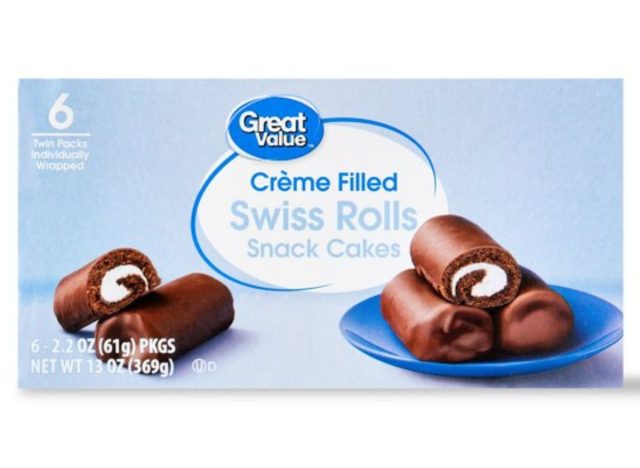
Per 1 serving; 240 calories, 9 g fat (6 g saturated fat), 150 mg sodium, 39 g carbs (2 g fiber, 19 g sugar), 1 g protein
Having a sweet treat on hand in the kitchen is never a bad thing, but this dessert option is one you’re going to want to leave on the shelf. While the serving size is two cakes—19 grams of added sugar is still high. It will be far too easy to eat this entire box by yourself in a short span of time so you’re better off just skipping these.
Be sure to check out 12 Frozen Breakfasts to Always Leave on Grocery Store Shelves for more packaged goods to steer clear of.
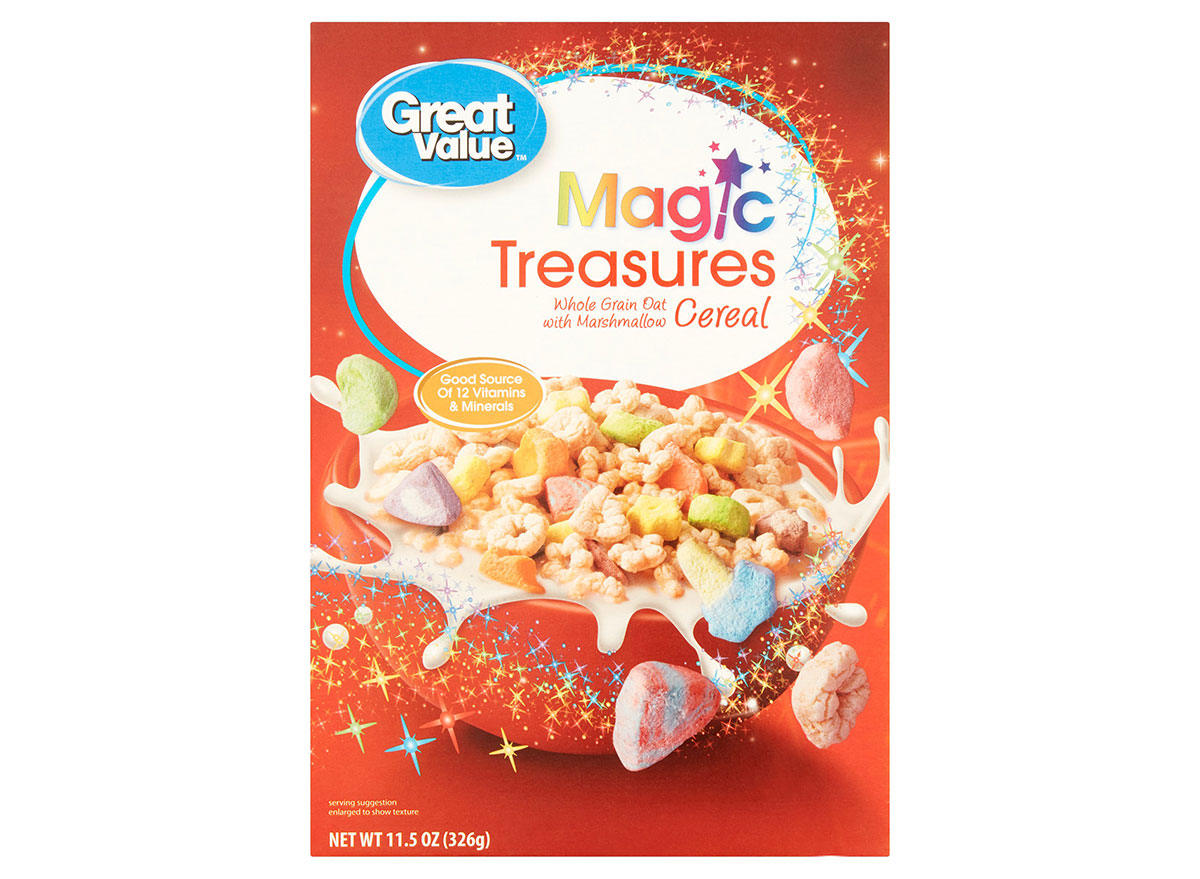

Per 1 serving; 160 calories, 1.5 g fat (0 g saturated fat), 280 mg sodium, 35 g carbs (2 g fiber, 17 g sugar), 3 g protein
The 17 grams of sugar alone should have you leaving this cereal in the store. And if that’s not enough, the ingredients list is filled with those pesky food colorings, Yellow 5 and 6 and Blue 1, which have their own lists of possible scary side effects. A bowl of colorful cereal in the morning just isn’t worth it right now!
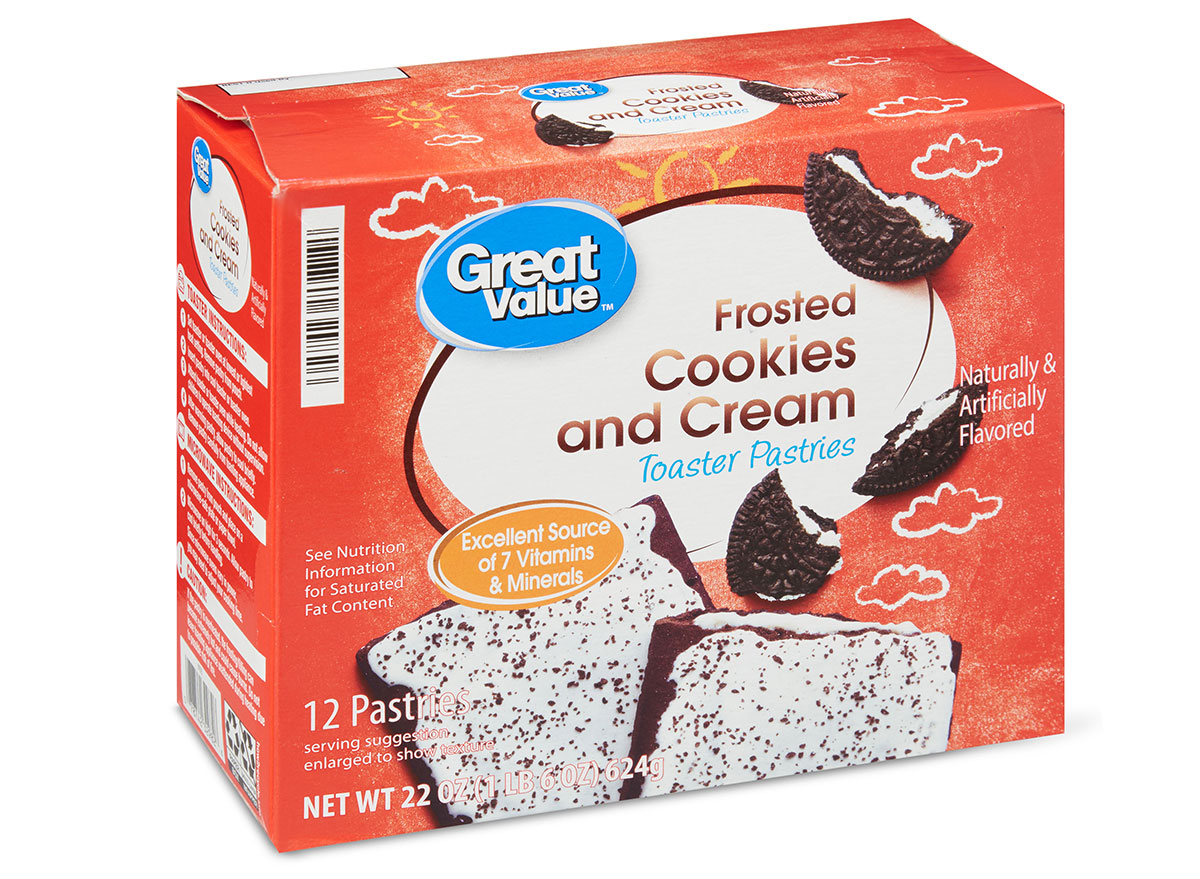
READ RELATED: Lockdown toll on heart health laid bare: Cardiac deaths rose 17% globally during pandemic

Per 1 pastry: 200 calories, 5 g fat (2 g saturated fat), 240 mg sodium, 37 g carbs (1 g fiber, 17 g sugar), 3 g protein
When sugar and high fructose corn syrup are high up on the ingredients list, you know you’re in trouble. These pastries cost you 200 calories a pop and nearly 20 grams of sugar to boot. Skip!
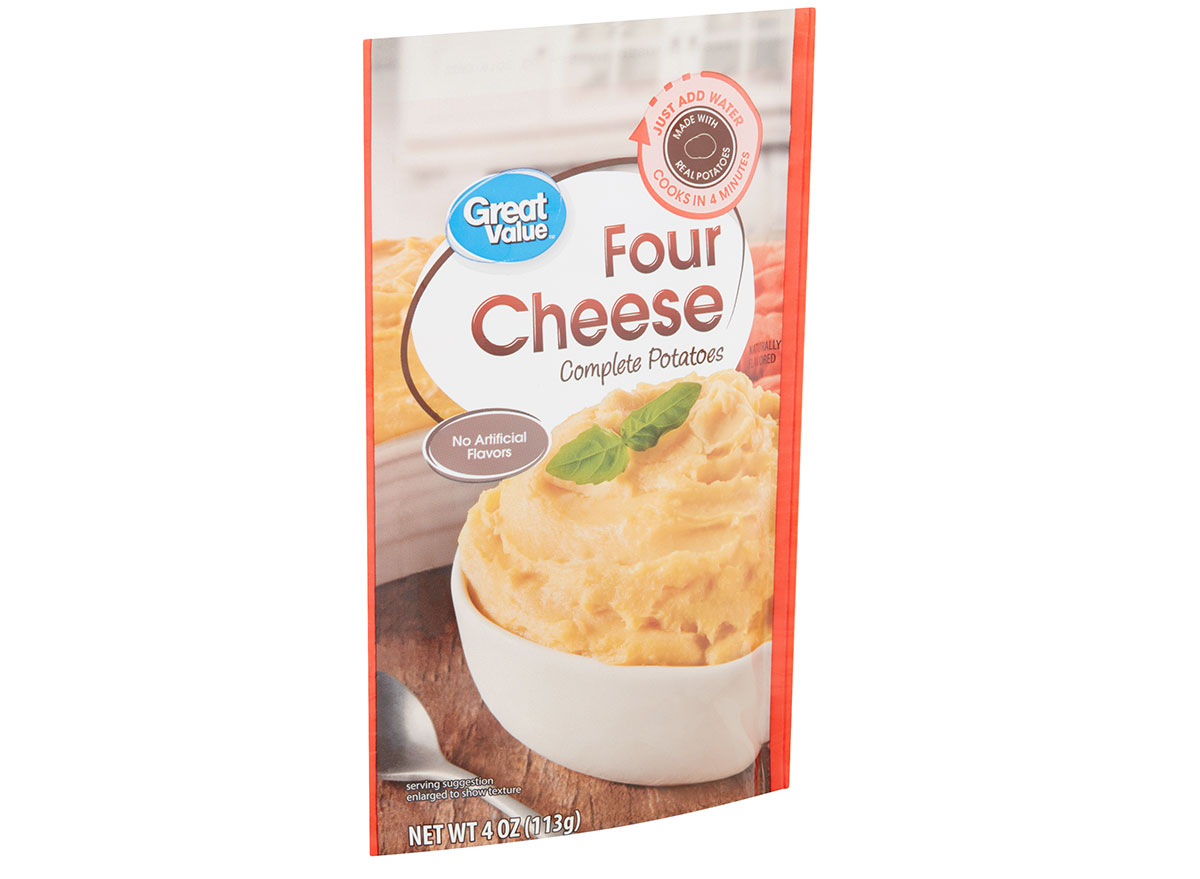

Per serving; 110 calories, 2 g fat (2 g saturated fat), 570 mg sodium, 20 g carbs (1 g fiber, 1 g sugar), 2 g protein
Potatoes don’t need to have that much sodium in them! Instead, boil some potatoes and mash them up yourself for a healthier option.
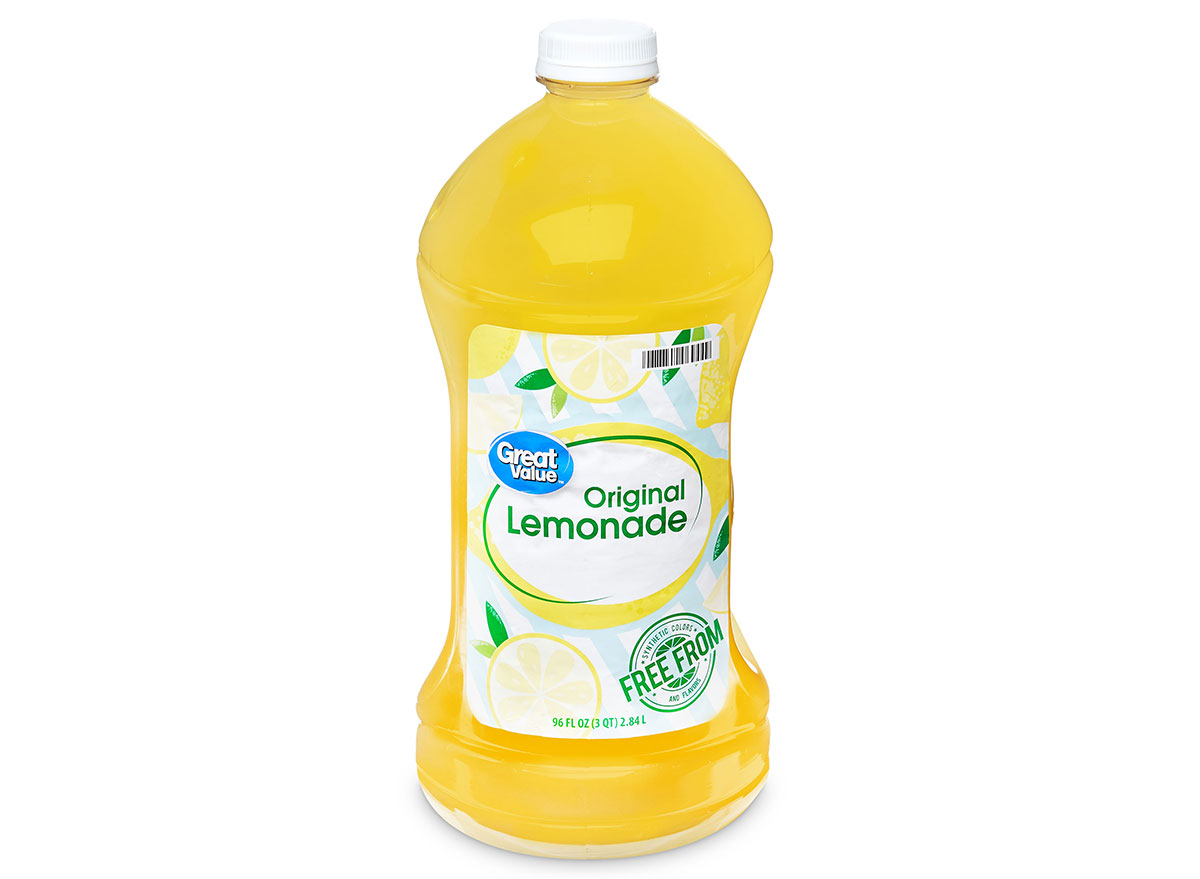

Per 1 serving; 100 calories, 0 g fat (0 g saturated fat), 35 mg sodium, 26 g carbs (0 g fiber, 24 g sugar), 0 g protein
One glass of Great Value lemonade is packing the same amount of added sugar you would find in one Hershey’s chocolate bar. This is one drink you surely don’t need to have stocked in your fridge.
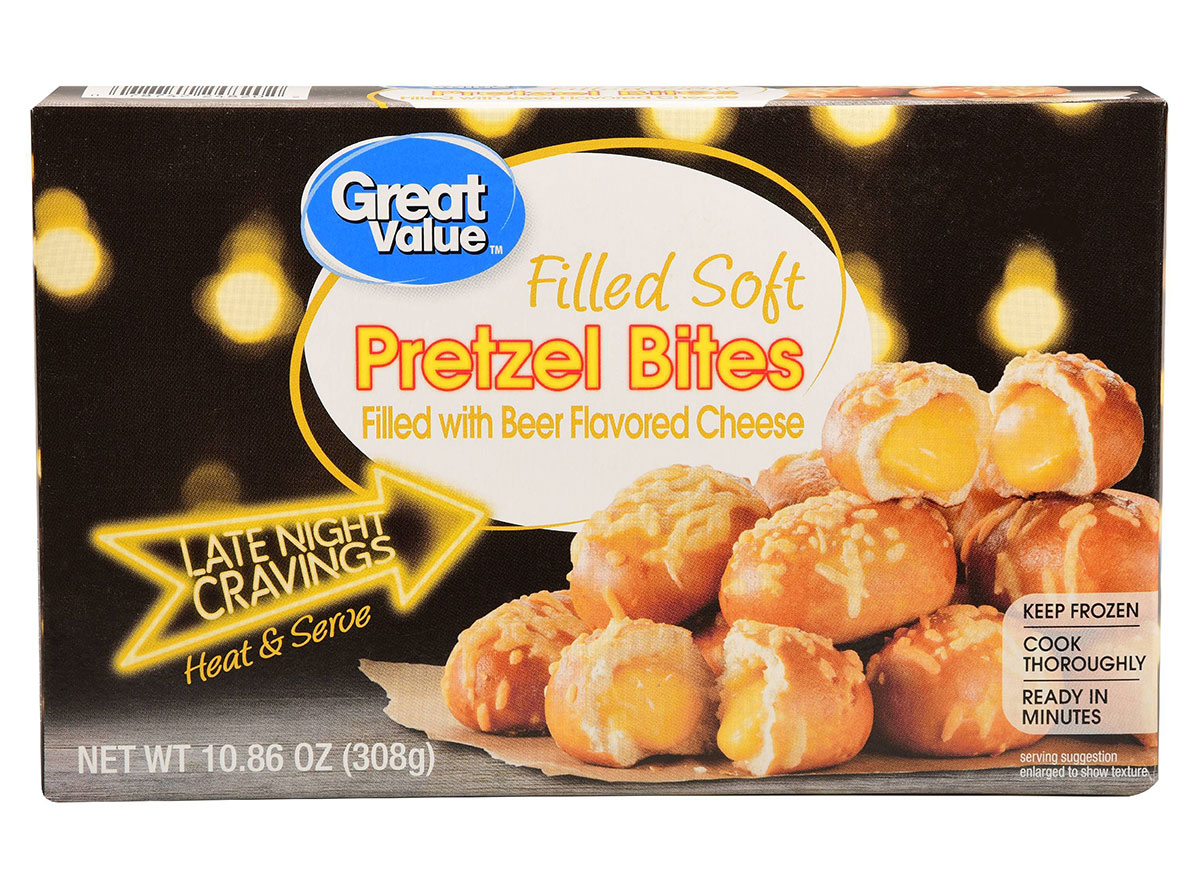

Per 1 serving; 230 calories, 7 g fat (4 g saturated fat), 850 mg sodium, 31 g carbs (1 g fiber, 3 g sugar), 11 g protein
This may curb your craving for some classic bar food, but it’s important to note that four pieces are one serving. So only four of these bites will set you back more than 200 calories and 850 milligrams of sodium. No thanks!
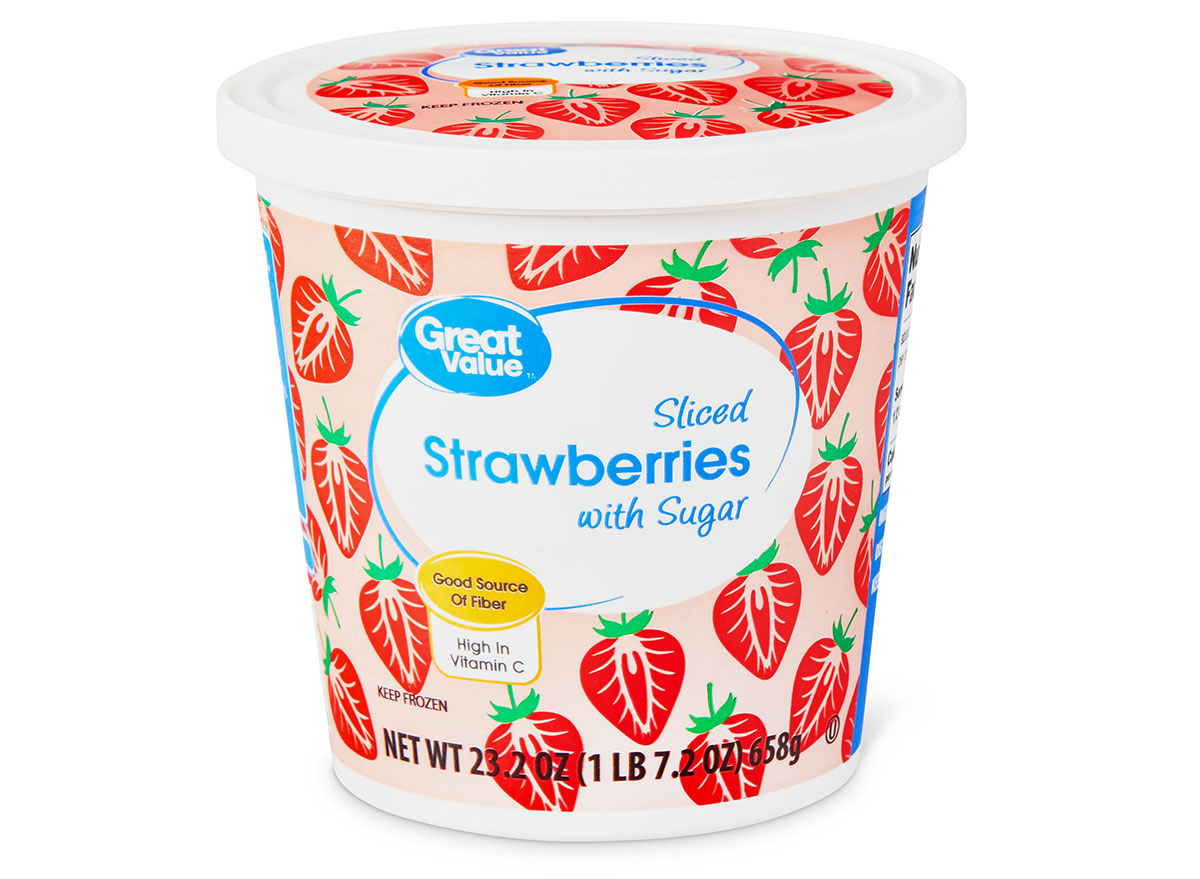

Per 1/2 cup: 120 calories, 0 g fat (0 g saturated fat), 0 mg sodium, 29 g carbs (3 g fiber, 23 g sugar), 0 g protein
Fruit has naturally occurring sugars, so it’s not a bad idea to munch on a few strawberries when you’re in the mood for something sweet. But these strawberries slices are coming in with 17 grams of added sugar (of the 23 total grams). And that is thanks to the sugar they’re swimming in. This fruit is already sweet enough on its own!
Don’t miss Eating This Fruit Daily Slashes Your Risk of Heart Disease, New Study Finds.
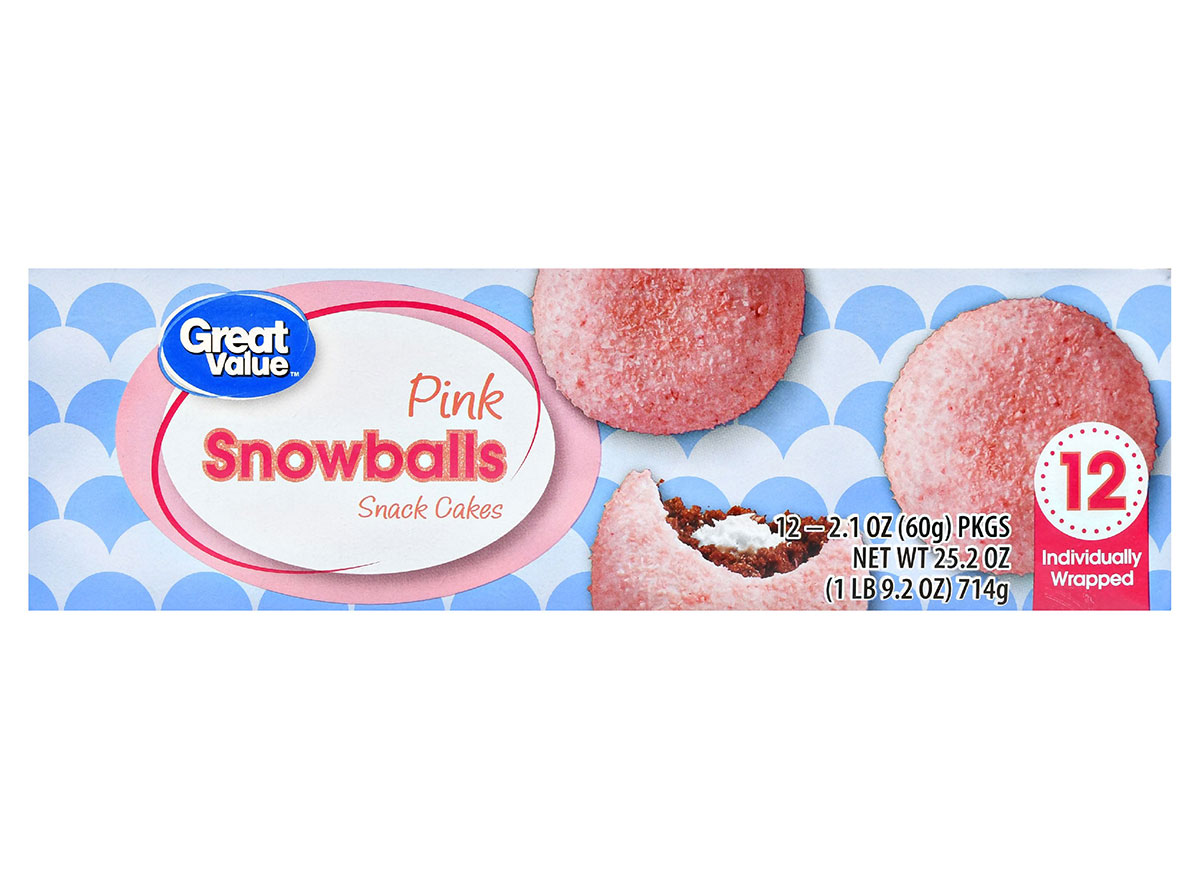

Per 1 serving; 210 calories, 5 g fat (2.5 g saturated fat), 230 mg sodium, 38 g carbs (2 g fiber, 24 g sugar), 2 g protein
It’s hard to really say what a pink snowball cake actually is, but just one of these is more than 200 calories and has 24 grams of sugar. Along with those 230 grams of sodium, this is one treat that isn’t going to help you stay on track with your health goals.
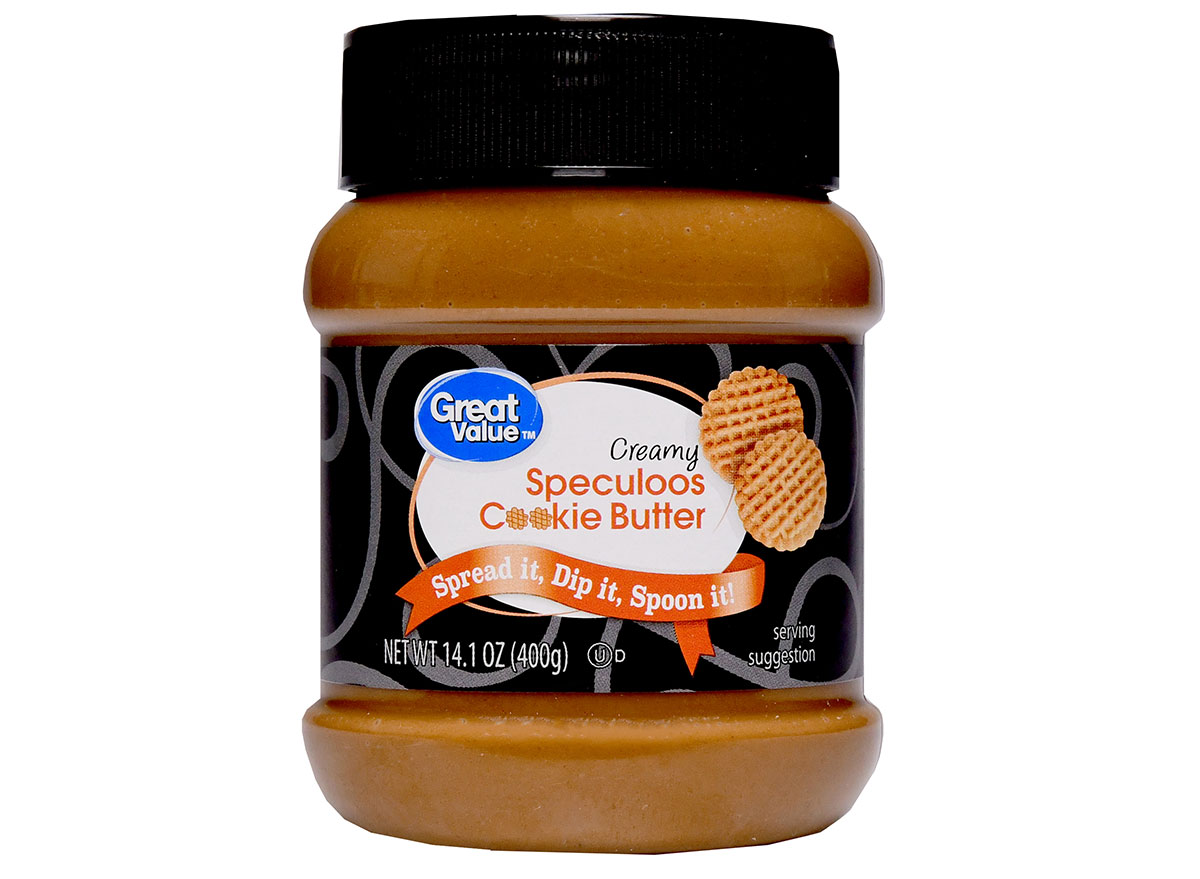

Per 1 serving; 210 calories, 14 g fat (4 g saturated fat), 95 mg sodium, 22 g carbs (0 g fiber, 13 g sugar), 1 g protein
While a cookie butter spread might sound like a nice change of pace, sticking with a classic nut butter is overall a healthier choice. Yes, peanut butter is good for you, as long as you’re choosing the right one!
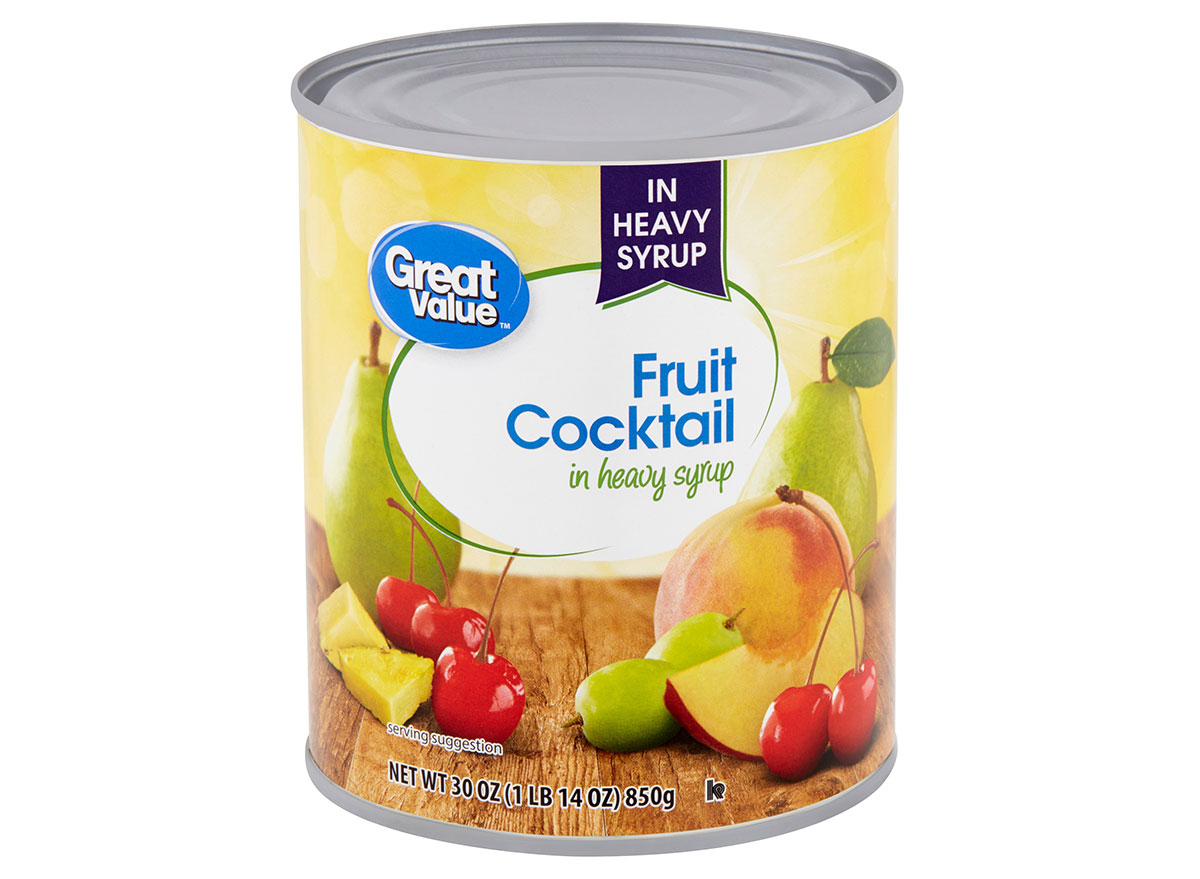

Per 1 serving; 100 calories, 0 g fat (0 g saturated fat), 0 mg sodium, 26 g carbs (1 g fiber, 18 g sugar), 0 g protein
If you’re not able to find fresh fruit, you might think going the canned route is a solid idea. Well, this fruit cocktail comes in a heavy syrup, which just screams unnecessary sugars. Instead, stock up on some frozen fruits.
Source:









